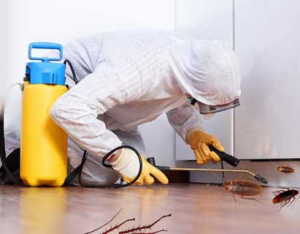Rodents can cause serious damage to homes and businesses. They spread diseases through their urine and feces, contaminate food with rodent droppings, and chew on wires to create dangerous snags and fire hazards.
Regular inspections of the interior and exterior of a home can help prevent rodent infestations. Look for signs of gnawing, chewing, and nesting materials. Seal gaps and holes with steel wool or caulk. Contact Rodent Control Canton now!

Rodents are a common pest problem in many homes and businesses. They can cause damage to a building, its contents, and the structure itself. They can also be carriers of disease and a threat to pets and people. Some of the most obvious signs of a rodent infestation include droppings, gnaw marks and contaminated food sources.
Rodents are nocturnal, so squeaking and scraping sounds in walls, ceilings, and attics during the night can indicate that rodents are scampering around and nesting in secluded areas. If you hear these noises, it is important to contact a professional rodent control service immediately to prevent an increase in their population and to establish the best methods for prevention and extermination.
Another sign of a rodent infestation is greasy rub marks or tracks along the floor and walls. These are caused by rodents using their oily fur to mark travel routes and resting places. The tracks can also lead to gnawed holes in wood, furniture and cardboard boxes. Rodents leave a stale, foul odor behind that is produced by the decomposition of urea in rodent urine.
If you see gnaw marks in wood, metal, or other materials, it is a sure sign that rats and mice are making their home in your house. Gnaw marks are light in color when fresh and will darken over time. Look for gnaw marks in corners and along baseboards, cabinets, drawers, and wires.
Inspecting your yard and garden for gnaw marks, burrows, and damage to fruits, vegetables, and grains is also an effective way to check for a rodent problem. These signs can indicate how extensive the rodent infestation is and will provide clues to how it was accomplished.
The best way to reduce your risk of a rodent infestation is to remove food, water, and shelter sources near your property. Keep branches and vegetation trimmed away from your building and consider rodent-proofing to prevent a new entry point. Mice only need a 1/4″ hole to enter a home, and rats can fit through a 1/2″ hole. Use tight-fitting, rodent-proof doors and seal any exterior gaps or cracks that can be used for rodent access points.
Nests
Rodents are known for their gnawing, which can cause significant damage to homes and businesses. The constant chewing can compromise the integrity of drywall, ceilings, walls, and insulation, causing serious issues with moisture, energy efficiency, and safety. Rodents can also carry diseases, bite people, and contaminate food preparation areas with droppings and urine.
Oftentimes, rodent infestations go unnoticed. However, if you see signs of rodents in your home or business, it’s important to take action. Rodents breed rapidly and their gnawing can cause severe damage in a short period of time. To get the most out of your property and avoid costly repairs, call Rest Easy Pest Control to discuss a rodent control plan.
In the wild, animals use their environment to construct safe and secure nests. They create these structures to protect their eggs and chicks from predators and weather. Depending on the species, nests may be sculpted out of plant matter, fur or feathers, mud, dirt, and other materials found in their environment. Animals usually select materials close to the location of the nest, as transporting materials can be costly in terms of both energy and time.
Nests can be amazingly complex, such as the pendant-shaped nests of weaver birds (which have an entrance on each end of the nest), or the sphere-like structures of some sunbirds. In addition to hiding the nest from predators, these structures also provide protection against wind and rain. A moss-heavy nest, for example, sucks water up like a sponge and takes a long time to dry. Other materials, such as grasses, are free-draining and will dry quickly.
When a nest is located in or around your property, it is a sign that rodents have taken up residence. Rodents can access your home or building through any number of cracks, holes, and gaps. Once inside, they look for food and shelter in a warm and dry environment.
You can reduce your risk of a rodent infestation by sealing exterior gaps and cracks, cleaning up food spills and trash promptly, and using tightly-latched garbage containers. Yard maintenance and trimming can also help reduce rodent habitat by eliminating weeds, overgrowth, and tree stumps.
Musty Smells
A musty smell can be an indication of a rodent infestation, but it could also indicate other issues. These may include high humidity levels, dampness or a dirty HVAC system. If the musty odor is caused by mold or mildew, the first step in the remediation process is to identify and remove the source of the odor. Mold spores can be harmful if inhaled, so it is important to take proper precautions when cleaning. Using a respirator, long gloves and goggles should be a minimum.
Depending on the cause of the musty smell, there are several ways that you can tackle it. If it is a result of dampness and moisture, you should fix any leaky pipes immediately, run a dehumidifier in the affected area and clean up spills or wet spots right away. This can prevent a musty smell and the growth of mildew or mold.
If the musty odor is a result of a rodent infestation, you should look for signs of activity. These can include runways, which are the discolored, greasy trails that rats leave behind in their search for food and shelter. You can also check for gnawed or chewed items, paper scraps and discarded droppings.
Rodents are attracted to food and water, but they also need shelter and warmth. They are clever and can find ways into your home through tiny gaps and cracks. Rodents can cause significant damage and spread disease if they are not controlled.
A professional pest control service can help you prevent a rodent infestation by identifying entry points and eliminating food and water sources that attract them. You can do your part by sealing cracks around your home, storing food in airtight containers and managing garbage effectively. It is also important to trim vegetation and keep firewood away from your house, as this can reduce outdoor rodent activity. A rodent control service can use baits and traps to eliminate rodents and keep them away. This is a safer alternative to DIY rodent control methods, which can be time-consuming and dangerous to pets and children.
Damage
Not only do rodents destroy homes and businesses, but they also put human health and safety at risk. Rodents are known to carry a wide array of harmful diseases including hantavirus, leptospirosis, and salmonella. They contaminate food supplies and spread bacteria through urine, droppings, and saliva. Additionally, rodents can chew through electrical wires which may result in costly property damage or even a fire.
It’s estimated that the damage caused by rodents costs American homeowners hundreds of millions of dollars each year. Many homeowner’s insurance policies do not cover the cost of mice or rat removal and related damage, which is why it’s essential to act quickly when you notice signs of rodent infestation.
Rodents are extremely clever and can outsmart basic pest control methods, especially if left unchecked for a long period of time. Luckily, there are several preventative measures you can take to protect your home or business from rodents and their destruction.
One way to keep rodents away from your home or business is to seal all entry points. This includes repairing cracks in the foundation, caulking around doors and windows, and installing door sweeps. Eliminating areas of standing water and addressing moisture issues will also help deter rodents as well. Another preventative measure is to keep food in sealed containers. This will help prevent rodents from gaining access to your kitchen.
Lastly, it’s important to maintain good housekeeping and remove any potential rodent hiding spots. This includes removing piles of lumber, stacks of old feed bags, and any other items that could attract rodents. It is also a good idea to install a tight-fitting wire mesh to your barn. This will stop rodents from entering your building and nesting inside the insulation in double-wall construction.
Rodents are a major problem for farmers as well. They damage crops and eat away at the roots of plants, leaving them stunted or dead. They also ruin stored grain, which can cause significant financial losses for businesses and individuals. Lastly, they can spread dangerous diseases through bites or scratches and through the transfer of fleas, ticks, mites, and lice.








